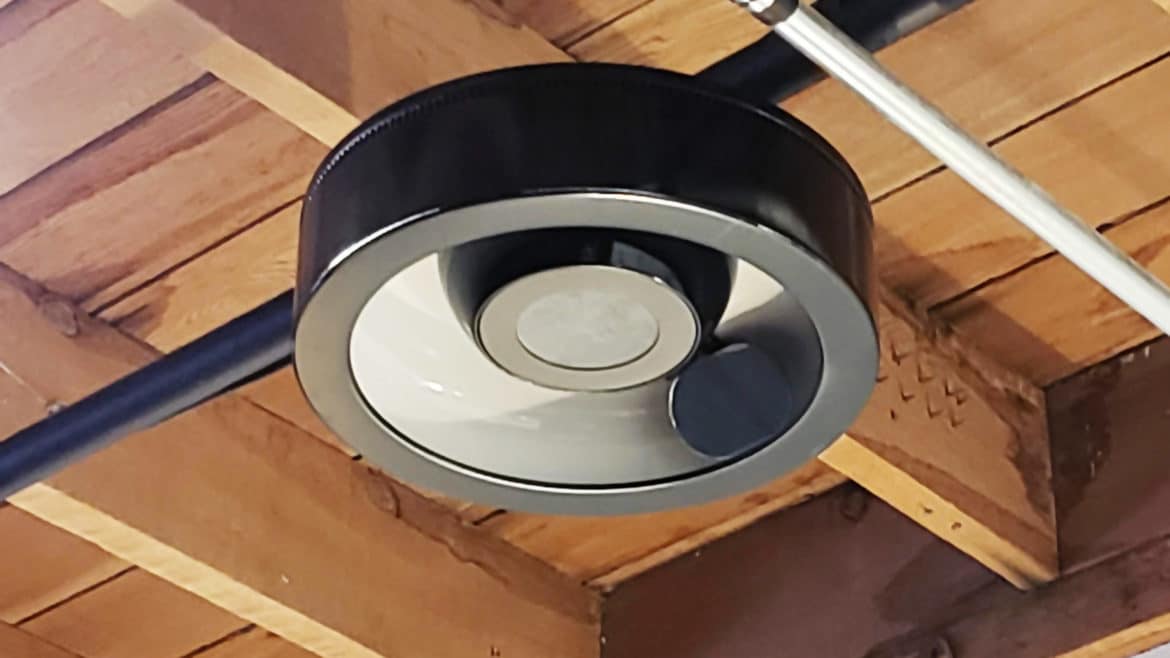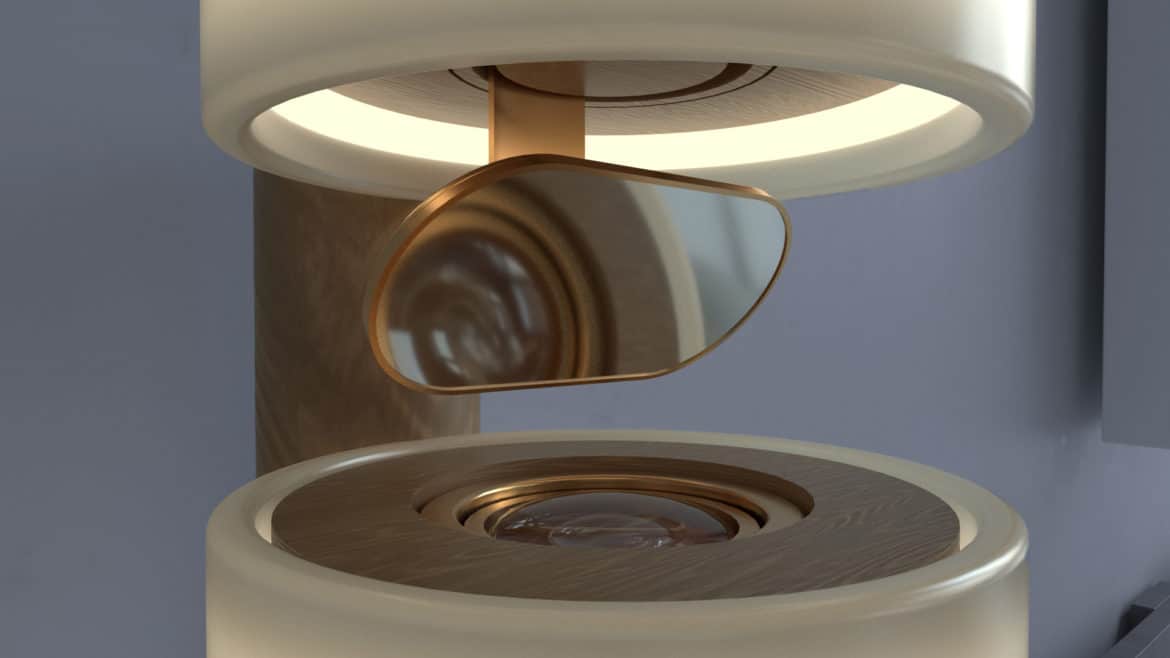Project LFX
Devices
Lighting and projection are converging. Industrial design is the primary difference between a light fixture and a projector, and with new LED and laser light engines, projectors are rapidly shrinking in size and cost.

In the future, we think every light bulb will be a projector and all indoor light will be spatially controlled. These projectors will have cameras and computers; they will understand the world around them and the people interacting amongst them.
In this future, our homes will come alive, they will understand us. They will be available and waiting for our command to assemble information and entertainment anywhere. In this way, every square millimeter in our world becomes an interactive pixel.
One idea, many designs
There are many ways to steer light using a combination of motors and mirrors. Our goal is to drive the direction of light using two methods, pan & tilt.
We can:
- Rotate the entire light engine with motors, providing the most extensive coverage area. Inevitably, this would also increase the device’s physical size and visible motion, requiring larger, more expensive, and noisy motors.
- Bounce the light off a surface mirror first, and then rotate the mirror itself with motors resulting in a smaller form factor but undoubtedly, with limited coverage.
Disk lamp
The Disk lamp uses two motors to rotate the light engine, computer, and cameras. The core disk sits on a u-shaped arc that tilts at the top while the entire arc rotates, panning throughout the space. This enables the disk lamp to operate with 360-degree panning and a near 360-degree tilt.
With variable height poles, the Disk lamp can function as a spot, a table, or even a floor lamp.

Due to the asymmetrical nature of the design, the movement of the Disk lamp is very apparent. When not actively steering, this will not be an issue. When steering or tracking a person, the Disk lamp could come across as a device of evil surveillance. Thus, the Disk lamp’s movements need to be animated and lively, like Pixar’s Luxo Jr.
Bringing this level of personification to the device allows it to become non-threatening, regarded as a welcoming presence within the space.
Motion study. Does not include cameras in the industrial design.
We built a fully functioning engineering prototype of the Disk lamp. The prototype uses a 700 Lumen LED light engine, a LattePanda Alpha 864 computer for processing, an Intel RealSense camera for real-time 3D scanning, and a miniDSP UMA-8 microphone array for voice processing.
The chassis was a custom 3D printed enclosure and the disk was ~11 inches in diameter. The prototype used off the shelf development boards and by customizing the board layout, the disc size could significantly be decreased.
Ceiling fixture
Our ceiling mount prototype seen in the concept video consists of a stationary light engine, steering the projection using a first surface mirror and two motors enabling up to ~200 degrees of pan & tilt.
Unfortunately, with a static light engine, the orientation of the projection changes as the mirror pans. While possible to correct the orientation in software, the aspect ratio of the 16:9 projector limits the available projected pixels. Ideally, this form factor would use a 1:1 aspect ratio imaging chip
4000 lumen laser phosphor projector with dual motor mirror design.
To increase the coverage, we need to rotate the light engine. By enclosing the light engine inside a central rotating column, we can achieve 360-degree panning, using a mirror and single motor for tilt. This form factor resembles a standard cylindrical ceiling flush mounted light fixture. Because the panning motion remains enclosed within a symmetrical cylinder, the movement is not apparent to the viewer.
Motion study rendering.

3D printed looks like prototype.
Cylinder lamp
Alternatively, using a smaller light engine and orienting the light engine upwards, like a torchiere light, we can shrink this concept down into a smaller form factor. Once again, achieving panning by rotating the symmetrical cylinder to ensure that the motion is less distracting.
Motion study. Does not include cameras in the industrial design.
Final designs can vary in fit and finish, emulating the variety of traditional lamps styles to seamlessly blend into the environment.

We made a prototype of the basic mechanics, steering a 1400 lumen LED light engine within a central rotating column and a tilt mirror.